Text
reblog this if your blog is a safe space on april fools and won’t have any jumpers, screamers, or anything scary or anxiety inducing
233K notes
·
View notes
Text
Starting Materials for Mediterranean Trancework

If you are wondering what you will need to get started on this as a group, I have put together a list of materials. This is basically what I use when I am teaching others how to do this and when I host trance rituals.
I keep a fully stocked trance kit with extras of all the below items so that those who need them can have something to use until they can get their own. If you intend to lead your own group, be prepared to provide at least a few things for the effort.
Frame Drums: 14”-16” frame drums with synthetic heads are best for beginners. Recommending Remo’s Thinline, Renaissance, Fiberskyn, or Tar series’. Synthetic heads help students build up skills and needed hand calluses at the same time. Goat or fish skin drum heads will tear up your skin and go flat without proper care very easily. Each person involved should know how to play a drum and learn the beats your group uses. Avoid buffalo drums and bodhrans, they are too heavy for Mediterranean style drumming.
Whiteboard and Easel: A wooden repurposed child’s art easel will work perfectly fine. Use it to balance a whiteboard where you can put up weekly notes. Large clips or magnets can be used to hold up a poster-board too, depending on what kind of easel you get. These are great for keeping up your trance chant lyric notes. Only use a whiteboard for notes that you will need once.
Poster Boards: Record trance chants and rhythms that you use with your group onto large poster boards so that everyone can read them during practice sessions. Use a poster-board for notes that you will need multiple times to spare yourself from writing it again and again every time you need it.
Trance Rhythms: I start folks out with 10 trance rhythms that can be used for pretty much everything. They work for just about any Mediterranean song you can find. I will have to film some samples for this so that you can hear them.
Trance Chants: To get through a basic trance ritual, you will need roughly 4-5 trance chants. Start your group with their first 5 and work on getting them down together. Some groups will prefer to work with songs in English, some will prefer songs in other languages, and some will prefer a mix of both. Feel out your group before you decide on your chants.
Online Database of Communication: Start up a group where you can share resources, communicate about upcoming trance dates, and load up videos privately. Keep it secure.
Incense: Incense is a trance trigger so pick one scent and stick to it every time you do practice or ritual. Keeping the same scent for all things trance will help participants go under. Use a soft floral scent like jasmine. Later, you can work in different scent triggers for different rituals.
Rug: You can use rubber gym mats that link and/or an actual rug. Rugs will give rug burns so plan accordingly. Whatever you use has to be easily perceived by touch rather than sight--so tape on the floor will not work. This well defined border will be where the entranced are free to move. They will confine themselves to it so make sure it is the right size for the job you want it to do.
White Flat Sheets: You will need at least 2 to start and +1 for each additional person who will trance. You can have your participants bring their own or you can pick some up from a second-hand store for fairly cheap. Everybody should have their own if possible.
Colored Scarves: All things are color coded in trance for hypnotic suggestion and we use colored scarves to communicate with each other during trance rituals. People who wear a red scarf are monitors who look after trance dancers, people who wear white scarves are trance dancers who are there to trance, people who wear light blue scarves are musicians, and people who wear dark blue scarves are ready and capable of leading a trance session. You can have people bring their own or supply the group yourself.
Your “Whites”: Each person will need an all white outfit to wear during trance rituals. For class, they can wear whatever they like. White is a spiritually neutral color used by all Mediterranean trance cults. Participants should supply their own trance clothes but you can keep a small supply of extra items to help supplement.
Altar Kit: A trance altar needs to have a water jug and rinsing bowl with scented water for participants to wash their hands and face at (Cortas brand rose or orange blossom water are easy to find at Mediterranean groceries). It will need incense for participants to smudge themselves, their clothes, their hair and their instruments with. It will need a plate for monetary donations (it should never be empty). It is lucky to put an odd number on the altar ($1, $3, $5, $7 or $9). It will also need essential oils for use on skin that participants can rub on themselves (floral, fruit, or herbal scents preferred). Scent is very important to trance so the key is to be consistent and use it liberally so the scent can work as a non-visual trigger.
Wake-up Kit: A pitcher or fancy spritz bottle of cool water to spray or sprinkle on the arms and forehead of the entranced when they are done trancing. A blended oil of strong purgative scents that is dabbed on the fingers of the guide or monitor and wiped on the nose of the entranced when they are done trancing. I prefer a blend of rosemary, cedar and clove oil--that’ll wake you up! Make sure that no one in the space has an allergy to a product you use.
Food: Always keep at least a loaf of fresh bread and some hummus for dipping on hand for post-trance snacks. Eating food helps those who have been trancing to come down and sober up. Water to drink is also helpful afterward. Be aware of dietary restrictions before you bring in foods that members of your group cannot eat.
Symbols: Think very carefully about the symbols you use and when you use them. Protect their meanings by bringing them out only when they are relevant. Continually reinforce their meanings in all that you do. This is a hypnotic suggestion and your symbols will become more and more important the more trancing you do.
16 notes
·
View notes
Text
Mediterranean Trancework Part III: Prophecy

Prophecy is a bit hard to categorize in English. It can basically be distilled into the concept of truths humans shouldn't be able to pull out of thin air without divine assistance. And it can be hard to separate prophecy from divine madness without understanding the different ways that these things manifest. Probably the most important aspect of it comes in the form of Proof of State.
Proof of State is established in a lot of different ways in trancework but it is always present where gods and spirits are concerned. This helps to weed out charlatans because proof of state is hard to fake. If you can do it then you can do it, if you can't then you can't. End of story.
Spoken Prophecy is a skill and proof of state is established by being able to perform that skill. There is a reason why prophecy is given in verse in theatrical representations of it. It is because traditional Mediterranean forms of prophecy (not divination, there is a difference in mediums there) involves spontaneously composing accurate prophetic verses--often in song or some kind of rhyme. There are expected poetic formats for it as well. These link the number of lines, syllables, and meter to symbolic numbers related to whatever they are doing.
For instance, those who speak for the dead traditionally compose their utterances in 6 lines with each line possessing 9 syllables. Always in divisions of 3 because death dances and death traditions in general play off of the number 3 quite a bit and all of those things go together. These songs are usually improvised on the spot at funerals where these practices are still observed. These songs form the background of funerary dances so they have to fit the pattern to go with the steps that everyone knows.
A good living example of this tradition exists in the Corsican voceru (singular) or voceri (plural). A voceritrice will speak from the perspective of the deceased to call out the living who wronged them in life. They speak on injustice endured by the deceased as well as express feelings of longing and desires for what they have left behind. These poetic expressions are often then carved as epitaphs on the deceased's gravestone. Giving everyone a unique voice in death and giving the living a chance to atone for their misdeeds before facing the cursed consequences of a pissed off ghost. (Perhaps not exactly a haunting--unless they were murdered--but more of a curse that befalls the living when they do something bad to someone and that person then dies.)
Prophecy has very strong celestial associations. Gods and spirits associated with the stars, with birds, and with pretty much anything that floats in the sky will usually have something to do with prophecy in some context. I think the folkloric idea behind that is that the sky itself sees everything and therefore knows everything but I am sure there are multiple layers to it. Certain cults focus on it more than others. For example, the cult of the Mountain Mother involves some aspects of prophecy. It is an ability given to the Deity Brides of the Mountain Mother--who compels all kinds of spirits. It is also associated with the sun, poetry, music, and gods like Astraios in particular. It can sometimes be applied to the Muses as well because they compel certain individuals to speak divine truth--which is in the same family of concepts. Birds and snakes are both envoys of prophecy in that they embody spirits and pass freely between the spiritworld and the mortal world.
Not all snakes though. Snakes are kind of a wildcard in iconography. Their exact meaning depends on the other context clues that surround them. So, snakes shown in the context of Dionysian ritual are not implying prophecy--just the presence of spirits. And if you have been reading along on some of my other posts you may also be aware that spirits heckin lie all the time. So, you may very well receive messages from spirits but unless those messages are true and they pass from your lips in appropriate verse, that's largely regarded (folklorically) as spirit gibberish/ divine madness.
And before we go any further on prophecy, let us take a moment to talk about spirit gibberish. Glossolalia is the language of spirits. I believe the classical Hellenic concept for this can be translated as "belly talk." It is usually described as being done in a demonic voice--basically using your 2nd set of vocal cords--which hurts like hell if you aren't used to doing it. It sounds like gibberish, it is gibberish. You may be able to understand it in the moment but nobody else will and that is the big difference between these things.
Prophecy is true, comprehensive even if cryptic, and rare. Spirits babble pretty much constantly so divine madness and spirit gibberish are neither rare nor really something to act on. It is there as part of the expected landscape. It happens in trancework quite a lot, especially in spirit possession traditions. But even the highest ranking spirits that possess mortal bodies are full of carp. It is always best to ignore it.
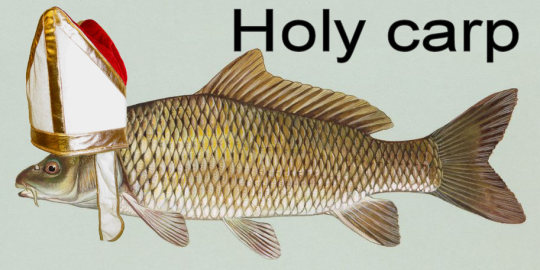
(Bet you thought that was a spelling error. lol)
Divine madness may not come to you in a demonic voice. You may just feel an idea or phrase pop unbidden into your mind that sounds kind of wise. Go ahead and tell somebody about it or write it down and read it later and it will sound neat but will ultimately be completely useless. Divine madness is like a windfall apple. You didn't ask for it. You have no way of knowing where it came from. And if you put it in your mouth there is a good chance you will find it rotten. It is fun, sacred in its own way, but it is not prophetic and should not be treated as anything special.
We are all just human and all divine stuff can seem wise and actionable but only prophecy is true. Proof of state keeps these concepts separate where we can enjoy each of them for what they are. the other thing that helps to compartmentalize these concepts is the ritual itself. Prophecy, like other forms of deeper Mediterranean trancework, is initiated by a combination of legomena (sacred words) and deiknumena (sacred items) to get to the desired dromena (responses/behaviors).
To have some control over where your divine inspiration is coming from, and making sure you get a good source for it, you make an opening prayer to a trusted deity or spirit associated with the type of prophecy that you are seeking. Asking that deity or spirit to guide you by forming the words in your mouth and asking that those words be true. You will also burn fragrant things associated with that deity or situation. This establishes a proper divine link and gets you into a receptive state. Covering the eyes and removing excess stimuli can help a lot, veiling is pretty essential to maintaining the receptive state. Others might close their eyes. This is part of why the archetype of the blind bard is so entrenched in Aegean and wider Mediterranean prophetic folklore. It is because the eyes are a distraction and being without them implies a naturally more prophetic state.
The entranced will then hum or drone, sometimes while rocking in a seated position, and wait for the inspiration to come. If and when it does, it will be improvised completely on the spot. Some prophecies are short and sweet. If we add the divine composition of epics into this then they can just go on and on for hours. Droning and polyphonic chant are associated with states of divine inspiration, partially because they can be sensory blockers. Like closing or covering the eyes, the echoing sound of a drone (such as you might get while singing in a cave) reverberating back at you can help block out other sounds and make it easier to receive divine inspiration. Basically you are engaging in ritualized sensory deprivation.
So the opening prayer constitutes the initiatory legomena, the incense, veiling, humming, and rocking motions initiate the deiknumena, and the prophecy spontaneously composed in verse is the expected dromena--which also provides the proof of state if the utterances are true.
This can happen to anyone but it most frequently is associated with women (including Trans) and non-binary persons. Gender does have traditional spiritual authority here but folklore gets a vote, not a veto. The gods and spirits choose who can do it and when. Sometimes an affinity for doing it repeatedly can arise in a person. That can be taken as a sign of favor from a deity and may lead to a relationship as a Deity Bride.
Which brings us to the last post in this series.
Read more in Part IV: Deity Bridalwork
26 notes
·
View notes
Text
Mediterranean Trancework Part II: Spirit Possession

(Pictured: A human/ scorpion hybrid statue. Scorpions are one of the traditional vectors of possession in the Med.)
Bodiless spirits inflame mortal minds. They enter through the openings of the body--the eyes, ears, nose, mouth, and parts further south (depending on the type of spirit and the tradition). They can also be introduced through the pinch (bite or sting) of a snake, spider, wasp, horsefly, or scorpion. These are what I refer to as the vectors of possession. Once a spirit does this, the possessed will fall sick. Not just any sickness either, this is possession illness and it behaves in a very specific way. Possession illness occurs because human bodies are not fully compatible with the spiritworld for long periods of time. Being closely involved with the spiritworld for an extended amount of time will 100% make a mortal sick.
Heroes and embodied heroes can get away with it due to the power of the ritual they participate in and that's really the key here. Without ritual structures to keep things functioning correctly, humans will get spirit sickness. With those rituals, humans do just fine. This is part of what religion and these types of rituals are specifically for. The opening of Hippocrates' De Morbo Sacro gets right at the heart of how common this was in antiquity and how it was exploited.
In ethical hands, most spirit possession rituals are geared towards bringing the mortal and possessing spirit into harmony with each other. This relationship places the mortal under the spirit and forever after the spirit is said to be above them, over their head. This relationship is permanent and it is one of the underlying reasons why Christianity took off in the Med as this relationship can be exhausting to a mortal's time and finances and it has been exploited by spirit masters at various points in history. (Spirit Masters are basically lay people outside of an official priestly hierarchy who have an affinity for compelling spirits, usually through music and experience.)
Christianity (and a few other 1st century cults centered around other miracle-worker/magi like Apollonius of Tyana) introduced the concept of exorcism where before there were only rituals of propitiation. They promised to cure the possessed permanently of their spiritual afflictions. And this is why polytheists were linked to what would later be called demon worship. It was because the standard ritual for this situation was geared towards making peace with malicious (or at least naughty) spirits.
There is just one problem with that. It doesn't effing work that way. Exorcism is a myth. Like the rituals exist and people do it and it is perfectly valid to believe in it and participate in it but be aware that the success rates are just abysmal. Remission is absurdly high. It doesn't matter what methods you use either. Ancient peoples understood this and they crafted their rituals to account for what is needed to keep a person functional and supported in society because there is nothing wrong with being different. Spirit possession is not rare by any means. Nobody is special for it. It just means there are some rituals to participate in to make sure that you get what you need to live a full life.

Think of wicked daemones as the embodiment of intrusive thoughts and compulsions. These things can be managed but they will always be a part of you. Possession rituals are ancient hypnotherapy and believe me, I am deeply amused by the revival of clinical hypnosis as they basically reinvent the wheel in a secular and socially acceptable way. They are doing the same darn thing without all the fun parts.
Part of why spirit possession and propitiation rituals work so well is because they provide community support. They make the people involved feel loved, valued, and supported. Without that community support, you would have to carry all of your healing by yourself and that can lead to feeling inadequate if you are unable to make the desired changes on your own. These rituals show that you are not alone. There is a whole community of people dealing with these things and they are not caused by some personal failing. Just like when dealing with alcoholism or other forms of addiction, the key is in externalizing the problem and responding to it as if it was separate from yourself. Recognize these compulsions as coming from somewhere else and you can isolate them and quiet them when they rise up. They will never be gone but they can be made more manageable. And you actually get to physically do something with your body. It can be very empowering.
In spirit possession traditions each spirit is called to dance by their own "thread" (spirit chant). This is the legomena aspect of the ritual. The spirit will remain completely dormant in the body of the possessed until it hears its unique rhythm and thread. Only then will it rise up and cause the Bride to dance. These rituals began under the cults of the Mountain Mothers, they then passed to the Weather/Blacksmithing cults, and finally to the cults of Dionysos. And of those three categories, there were and still are regional variations for each one. So, there is a lot out there to explore as far as ritual structure goes.
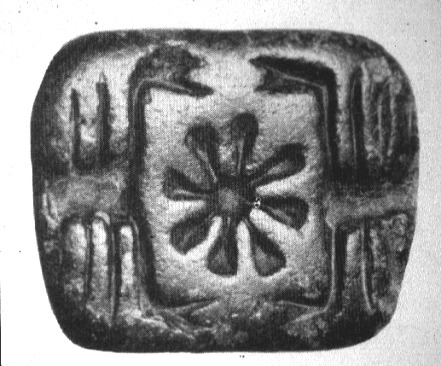
The basic format of the ritual works like this...
First a potential Bride must go to a doctor to see if what they are experiencing has a physiological cause and treatment. Preferably more than one in pursuit of a cure or solution. If all of that fails, the afflicted will then move onto seeking help from a mental health professional. If that fails to yield the desired results, the next step would be to seek out assistance from your local official spiritual authority (a priest or someone with official knowledge and skills in your religion). If that person fails as well, through a process of elimination it then falls to a Spirit Master--but only if you want to go that route. All of this has to be voluntary. If you don't want to do this then you don't do this. It is that simple. Nobody can be forced to participate in these types of rituals, nor should anyone feel pressured to do so.
That whole process is part of establishing the proof of state. If nobody else can help you then it is more likely that the root cause of the problem is related to naughty spirits.
Once that is established then you can participate in a ritual to identify who the spirit hanging over you is and from there the spirit master will determine what they want. This is a highly interactive process. Different traditions will accomplish this in slightly different ways. The large group rituals will basically have a set list of spirit threads that they will perform in order and all those who are Brides will respond to the song of their spirit in that order. If the ritual is more one on one then the Spirit Master will play different threads to see what the potential Bride responds to. This can get tricky because some spirits lie--but they do so in a very predictable set of ways. If the spirit fails to respond in the right way, the Spirit Master may send the potential Bride to a different Spirit House as known spirits are very set in their ways and do not deviate from the expected Dromena.
This means you will have a harder time if these concepts are foreign to you. This is an interaction with cultural coding so you can't just make up whatever you want or do random things and call it spiritwork. You can certainly feel divinely inspired to craft rules for your own spirit house but be aware that to some extent this stuff is both physiological and psychological and there is a spectrum of ways in which it is functional. So, if you step too far outside of that spectrum, it may not work the way you want it to. This is an ideological technology. It may be rooted in beliefs but it is not completely carried by them, part of this is just rooted in how our brains and bodies work.
Spiritwork/ spirit possession is really neat stuff but you have got to know what you are doing inside and out to pull it off (as a Spirit Master).

In addition to the legomena of the spirit threads (chants), there are also certain sounds that call spirits and induce reactions. These sounds are technically deiknumena. They represent the hypnotic suggestion of "when you hear this, you will do X Dromena response." This works in concert with colors, incense (smell is the most spiritual of the senses), regalia, tools, etc. When the spirit has been identified, the Bride will receive all of the desired trappings of that spirit. Their clothes, their tools, their scents, their hairstyles and jewelry (if any), and especially their foods and drinks. When the Bride takes all of these things together and dances with them to their spirit's thread, they embody their spirit and this brings unity between them. That unity manifests as dromena.
The desired Dromena are based in cultural expectation. Dromena are behaviors. As a quick example, let's say that we are performing a ritual together and you are entranced and I am performing the role of spirit master, wrangler of Brides. We are doing everything in the expected way, nice and formal. You are possessed by a spirit that absolutely loves the color pink and is known to have childlike behaviors. While you are dancing in a fully entranced state and fully embodying your possessing spirit, I drop a pink scarf over your head. The dromena would be how you respond to that.
Cultural expectation dictates that your spirit will behave like a child and that your spirit will be absolutely enthralled with anything pink. So, by giving you something pink to play with while entranced, the expected dromena will be somewhere in the realm of giddy kid with their most favorite thing ever. Anything that fits that description and falls within the rules we have established for this ritual is fair game. Go wild. This means that there are many right ways to do it. There isn't any one single thing that I am expecting to see but if you take that pink scarf and angrily shred it to pieces, that is NOT the expected dromena and that is wrong. So technically there is a right and a wrong way to express dromena but it is more of a spectrum than a bullseye.
Now let us imagine that you are embodying that same spirit and we are doing some kind of public ritual processional and you see someone in the crowd wearing pink. Dromena dictates that you will probably run up to that person and play with the pink whatever. That is expected. But if there are ritual constraints placed upon you, such as bells, that would prevent that spirit from going past a certain point, that dromena overpowers and overrides the desire to touch the pink thing. Your spirit may fixate, they may stomp like a little kid not getting their way, but they will not cross that bell ringing boundary. Because spirits have very strict rules that they have to follow while inhabiting the bodies of mortals.
This is why ritual formality is a big deal. It keeps everybody safe.
Without the full ritual featuring all the right rhythms, words, scents, colors, regalia, and tools, this stuff just doesn't function properly. All of it works together.
Read more in Part III: Prophecy
24 notes
·
View notes
Text
Mediterranean Trancework Part I: Shapeshifting
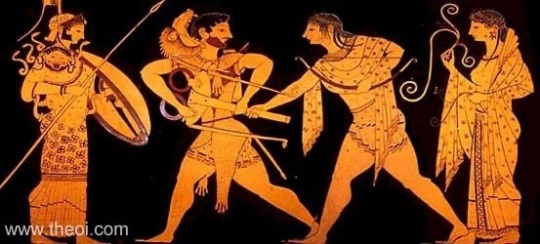
(Pictured: Athena with Aegis, Hercules with lion-skin pelt stealing a tripod from Apollo--who clearly has some thoughts about that since he is grabbing it and trying to pull it away from Hercules, all while the Pythia watches while holding incense in her hand.)
Gods, heroes, spirits, and even certain mortals are illustrated consistently in iconography to be surrounded by their specific encoded trappings--their unique clothing, weapons, holy symbols, and items or even creatures that they have with them. Even the number of dots or lines used in abstract background images have an encoded meaning when they are present. Usually representing the counting of time by days, lunar cycles/months, or even years. The direction of a triangle, pointing up or down, also has a contextual meaning. Even the hairstyle worn by a figure is there to provide context clues for what you are seeing. Nothing is truly background in iconography. All of it works together to identify who the characters are, what they are doing, and when it is happening. It is meant to be read and it is even meant to be somewhat easy to understand at a glance.
The deeper forms of Mediterranean trancework relate to shapeshifting, spirit possession, prophecy, deity Bridalwork, and variations related to those main four. All of these types of rituals involve three things that are not necessary in basic trancework. Those things are:
Legomena. Things recited. Sacred words, sacred chants, spirit threads. When these particular things are spoken in the right way, it induces specific trance effects.
Deiknumena. Things shown. This would be your regalia, food and drink, colors, tools, spirit weapons, body art, etc. Depending on the ritual, these things are either just made visible to the entranced or they are handled, imbibed, or worn.
Dromena. Behaviors. The actions that are prompted by exposure to the combination of legomena and deiknumena.

Shapeshifting
Shapeshifting can be any kind of transformation. It can relate to gender, age, lycanthropy or some other form of animal transformation (bears, wolves, and pigs being the most common), or turning an ordinary mortal into a hero (or anti-hero) for a time. All of which are done in order to accomplish a ritual objective, usually through elaborate ritual dances or through taking on a named role in reenacting a sacred legend. All shapeshifting rituals involve ritually imbibing something that will initiate the transformation, taking on the adornments that go with that transformation (wearing animal skins or essentially dressing the part), there is a ritual objective to be achieved while in that state, and then there is the proof of state--which is usually a demonstration of something inhuman. Like something your average mortal would be unable or unwilling to do in their right mind.
Hero legends are a roadmap for this process. Basically, any hero legend that you can find is something you can recreate through trancework and it was probably done that way in antiquity since that is how it is still done now. Becoming Hercules is something to physically do, to actually participate in. Enacting these types of transformations at specific points in the year helps to facilitate the changing of the seasons. It works to promote the spiritual hygiene of a community since one of the things done as a part of reenacting sacred legends is the blessing of an area. Which only a divinely chosen shapeshifted individual would have the spiritual authority to do.
The keyword here is divinely chosen. That basically just means that this is not something a person chooses to do for themselves as that would reek of hubris. Instead, out of a gathering of people qualified to do the job, some kind of divination process would take place. Usually by drawing lots in some way. The outcome of who does what has to always be left to chance but it is always quality controlled by limiting participation to people who have the spiritual authority to do the job to begin with. So, if a ritual has to do with death gods or heroes, then the pool of folks who draw lots would consist of people whose families have historically worked with the dead (as a mortician, gravedigger, or, to update this for a more modern world, as a coroner). Or they might involve people born under the dog star, or to a family who is under the protection of that collection of gods and spirits, or people born with other signs that would have been identified by a midwife at birth. There are a lot of ways to figure out who does this.
Honestly, at this point in the game, I think the pool is already limited enough so I would say that just feeling compelled to participate in something like this would put you in the group of folks drawing lots. There just aren't often very many of us gathered in any single location. Maybe one day when if there are too many applicants it can be narrowed down in one of the more traditional ways. That would be my suggested adaptation while saving room for the way that it has been done historically.
However, the most important aspect of being chosen to do this is the ability to actually do it. So, if this ritual involves performing 7 ritualized combat dances, you would have to know how to do those dances to even get a foot in the door. Thus we have our first real hurdle with this. Not many converts to Hellenic polytheism know the dances for this stuff or where they should go. The dances are not hard. They would have to be pretty simple and repetitive enough to keep the entranced entranced. All it takes is a little time and dedication. You could learn a traditional dance or remake one using several in the same genre as a guideline.
Heroes and spirits can take part in processionals where they would basically stay in character while moving from one place to another. Mind you, this is a sacred state achieved through trancework and not just cosplay with vibes. I just don't know any other way to describe it to a modern audience. While in such a processional, various archetypes/characters/heroes/spirits will interact with each other in their customary ways. This is the expected dromena mentioned a bit earlier. Each shapeshifted individual has an expected way in which they will behave and they are strictly limited to these behaviors in order for the sacred state to be recognized as valid.
So, during a processional, wicked daemones will run from or obey the sounds of ringing metal (even the clashing of swords). Heroes will be brave and keep spirits in line, protecting those who have gathered to watch. If there are two teams of shapeshifters, they will be antagonistic towards each other. Teams of naughty satyrs will do naughty satyr things to & with observers (within reason).
Watch this video below of the Mamuthones & Issohadores of Sardinia. And go ahead and let the idea that the origin of beings like Krampus are rooted in the processionals of spirits, heroes, and gods of the ancient world. Listen to that rhythm. That is the rhythm of transformation all across the Med. So, the music that goes with this and the movements done with this are evocative and it won't work with just anything. Pop music is fun for getting into the mood but those traditional rhythms and movements have a very specific purpose and all of it together forms an ancient bond between what we do now and what our ancestors have done.
youtube
Deity bridal work functions very similarly to this to the point that it can be virtually indistinguishable from shapeshifting in the results. The main differences between these things is the lead up to the ritual and the permanency of these states. Shapeshifters adopt the role for a limited time frame, Brides are compelled to do this for their entire lives and essentially have to live and behave in a ritual state the entire time.
Upstanding members of the community are traditionally favored for shapeshifting rituals. I know that part of that is just a reward for status but there is also an unspoken and pretty cute element to that as well. To put it simply, it is more fun to watch uptight moral people transform into wild beasts. And being divinely chosen to do it means they don't get to say no because it is an honor to turn into a dancing hairy doof. I will never stop giggling over that.
Shapeshifting rituals are for what we might call sympathetic magic today. They reaffirm our bond with the land and the changing seasons. They allow us to embody our heroes and form a link with our ancestors. It is sacred.
Read more in Part II: Spirit Possession
39 notes
·
View notes
Text


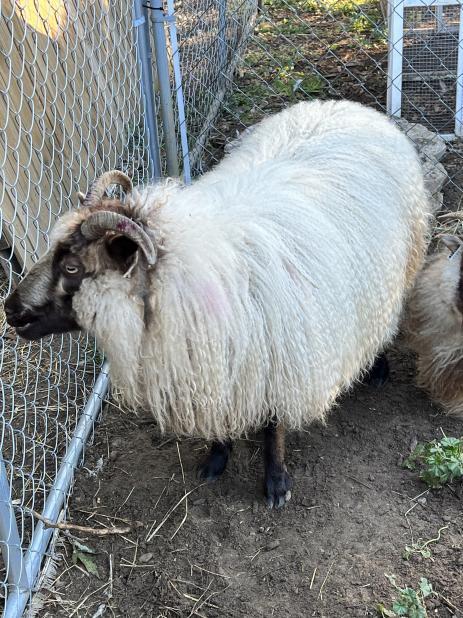




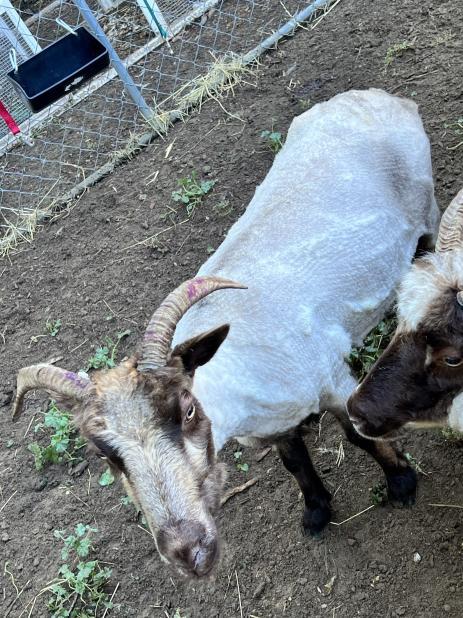



Naked sheep day is adorable. They start out so floofy but by the end they're sleeky sheepies and they barely recognize each other. Chaotic cuteness. All Icelandic sheepos, except for the white one--she is a half Cheviot.
5 notes
·
View notes
Note
quick question are you by any chance on Eiresione Iketiria?
Yep. I am a mod over there. They are the folks who suggested I take some of the things we were talking about over there and make a tumblr blog to make those topics easier to find later.
5 notes
·
View notes
Text

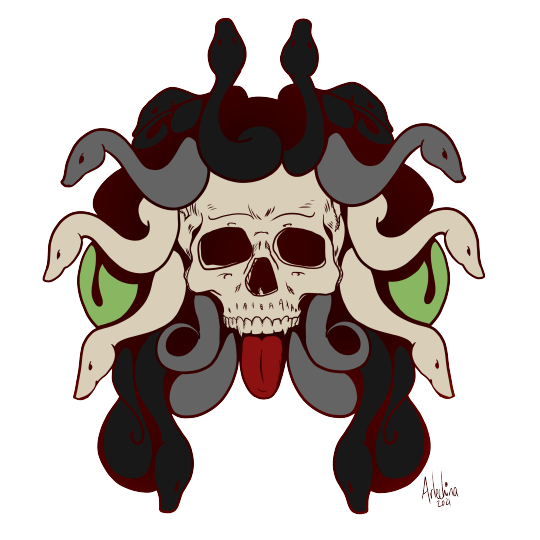












For our ancestors. For the living and the dead. For safety. For pride. For strength. For understanding. For victory. For the good times & the bad times. For those moments when we dance alone and for the moments when we move as one.
16 notes
·
View notes
Note
Just realized that I sent you that ask without explaining what I was talking about. I came across a vague mention of the possibility that belly dance *might* be connected to the zar rituals you've mentioned before, and I wondered if you might have heard anything about that.
Raqs Sharqi has nothing to do with zar at all. If you want to understand zar, come visit me in the Eiresione Iketiria discord server and I can walk you through it. ;-)
3 notes
·
View notes
Note
As a dance ethnologist, can you say anything about the history of belly dance/rRaks Sharqi? I've been trying to do some research, but the sources I've found mostly talk about recent history, so I was wondering if you can point me to any sources that go back further than the last century or so.
This is a very spicy topic. Raqs Sharqi is a modern invention having only been around for about the last hundred years or so. Though reasonable arguments can be made that a budding form of proto Raqs Sharqi has been around since about the 1830s. It is based on a lot of things, some of those things are traditional & indigenous and some of those things are bloody & colonialist. There is a lot of entrenched racism involved and because this is a style of dance that exists out there right now, that drama is still playing out so there are some very heated opinions on it.
For anyone reading who may not know, Raqs Sharqi is the Egyptian word for what is sometimes called Oriental or Oryantal Dance or Bellydance. If you were to go back about 200 years ago in Egypt, the dances closest to Raqs Sharqi would have been done by a non-binary entertainer class known as khawal. English resources still often refer to them as "dancing boys" but this is misgendering them--which colonialism has a really long history of doing. Dr. Anthony Shay has written quite a bit about the non-binary entertainer class of that region and beyond. I recommend checking out the anthology, "When Men Dance: Choreographing Masculinities Across Borders," for a deeper history on that.
The khawal were the Egyptian equivalent of the more famous Ottoman (and then Turkish) köçekler--which I wrote about in a post titled, "The Aegean Gender Tour." That post also goes into why dances traditionally done by non-binary performers prior to the 19th century were suddenly handed off to AFAB persons but it bypassed some of the uglier history. (There is a lot of rape and murder involved in the history of this dance form, let alone a history that closely mirrors minstrelsy.)
If you want to study indigenous dances of Egypt, check out the work of fellow dance ethnologist Sahra Saeeda. Or the work of Carolina Varga Dinicu.
Hope that helps.
8 notes
·
View notes
Note
Hey! I really love your blog and the information you've shared is very helpful and validating for my own practice, so thank you so much for sharing!
Do you have any tips for developing a practice/building a better discipline for trance work?
I am so glad you are getting something from the blog. That is awesome. I love that kind of feedback. Developing your skills for trancework looks a bit different at each stage. Since I am not sure where you are in this and who else might be reading, I'll just go through all of it. I wrote this as a response to your question as a separate post to make it easier to share and find. Hope this helps.
8 notes
·
View notes
Text
Training for Trancework

(Pictured: A working trance altar with resin incense, flowers, chocolate, salt & herbs, and a plate for monetary offerings.)
Basic Trancework
-Just trance for the sake of trance. Celebration. Experimentation. Fun. Labor.
In the beginning, your efforts should be focused on just getting into and out of an altered state safely and reliably. You can do that by giving yourself permission to go all in. Embrace the magic floppy time without hesitation or second guessing yourself. Make peace with things as they are. If your hair is messy, just let that concern go. If your mind is too loud to release from your body, disconnect from your worries. Whatever holds you back from totally relaxing into yourself, put it aside temporarily.
In my opinion, the best way to do these things is to just play around with it. When starting out with any new thing, there should be a childhood phase. It may grow to be a serious thing later but in the beginning, you get to be childlike and just explore what is possible and what you like. Whatever brings you a sense of peace and joy. That will give you a strong foundation to build upon later.
On a practical level, that will mean putting on some music or playing with live musicians and engaging in simple repetitive (dance) movements that disrupt the body's equilibrium. Rocking side to side or front to back, whirling, rolling movements that ripple from the spine through the limbs. It is okay to flop on the group. Trance dancing is dance but it is more to be felt than seen so it doesn't have to look dignified in any way. Just enjoy yourself and let your mind go.
If you are developing trancework as a musician (musician's trance is definitely a thing) then at this stage you will want to practice your music until you feel confident with it and then condition yourself to relax more and more as you go. Committing a song to memory will really help, that way you don't have to stay focused. Your muscle memory will carry you through but only if you have trained your body to do it while fully awake first.
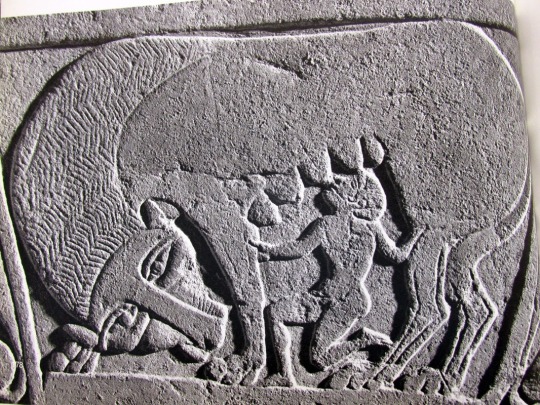
Catalyst Trancework
-Trancework that utilizes a fuel source to propel you deeper into an altered state. This can be a heavy emotion like love, rage, or grief, OR a substance like alcohol that can melt away barriers between the active wakeful mind and the loose uninhibited mind. It can also just be a power object that you introduce whenever you trance that will send you over the other side.
Once you have the basics down and you can get in and out of a trance without much difficulty, you will want to shift to a different goal. At this stage, you will want to build up your hypnotic conditioning to reduce your reaction time and encourage muscle memory over active waking-mind reactions. This is where trancework starts getting formal. If you want to engage with Med style trancework then you will wear white when you trance. Every time. This conditions your mind to only trance when you are wearing white and it helps to keep you out of an altered state when you don't want to be in one.
At this stage you can use colors, symbols, and scents to create the hypnotic suggestion that now is the time to trance as well as what kind of trance you want to engage in. Use different incense, scented oils, and perfumes to trigger different muscle memory states. Use each scent consistently and for no other purpose to keep those associations strong. They will build over time.
You can also paint symbols on your body that have deeper occult meanings for you personally or culturally. I use mud, henna, and wood ash to create designs on my body for this. They can be for protection, for magic, for enhancement, for whatever you need. Just use them consistently and for no other purpose than this.
This is a good stage to start developing group trancework as well. Through repetitive chain or circle dances with others. Just like with the musician's trance training described above, you will want to learn and perfect the dances you want to use while fully awake and then begin conditioning yourself to relax while doing them in a trance. This places the burden of movement on your muscle memory rather than your active wakeful mind.
As a musician, you can start weaving more complicated rhythms and start developing your skills at improvisation. To do this as a singer, take one or two songs that you know really well and start amusing yourself by crafting new lyrics for them. Do it often in a wakeful state. The goal of this is to condition the mind to be able to improvise lyrics in an altered state. This is used in traditional Mediterranean mediumship where the ability to spontaneously compose verse from the perspective of the dead provides proof of state. With an instrument you will probably end up going down a folkloric numerical rabbit hole. Where each number has a spiritual significance and you start anchoring the music you make to those numerical associations.

Ecstatic Trance
-Spiritwork. Any trancework that involves spirits other than your own but not gods. This can be a form of automatic mediumship, or some form of possession. The Cult of the Winds and some of the trancework relating to both the Mountain Mothers & Dionysos fit this description.
There are so many angles to developing the knowledge and skills for this type of trancework. If you are a Bride then you would initiate into a living tradition or a reconstructed one with people that you trust. To develop skills as a Bride, you will want to practice extremely strict compartmentalization and reinforcement of your hypnotic triggers. The exact parameters of what you would do here depends on what spirit you are a Bride to.
If you are a musician then you will spend a lot of time memorizing threads (spirit chants) and rhythms. There can be dozens to hundreds of threads depending on which spirit cult you are involved with. You will also devote some energy to strict compartmentalization of your hypnotic triggers, which are also cult specific.
If you are training as a monitor (someone who watches over the entranced), you will spend a lot of time in the trenches watching the body language of the entranced and learning to read the signs to interpret what is going on. And, of course, you will spend time learning how to troubleshoot various scenarios where your skills will be tested.
If you are training to be a lead musician then buckle up because you will have to learn all of it and then some. To be a lead musician is to intimately and skillfully be able to perform every role used in trancework. You will also want to start acquiring gear that your trance group will need to host a ritual. (I'll make a separate post on what kind of materials you will want to have on hand for that.)

Euphoric or Enthusiastic Trance
-Bridalwork, which is ecstatic trance with gods instead of spirits. This will also be cult specific. Some euphoric traditions just focus on becoming closer to divinity for no other purpose than it is holy and desirable. Others use music as a diagnostic process to see if a person has run afoul of a god. And still others utilize euphoric trance to drive away lesser spirits who are making problems for mortals.
This is the most formal type of trancework there is. That formality is there as a safety feature and to facilitate the creation of proof of state. The more strict you are with this type of trancework, the farther you will go with it. It takes a lot of faith. You have to know what you are doing with absolute certitude and commit to it fully. The more reverence you put into it in your waking life, the deeper your connection while entranced.
Unfortunately those three different ritual goal styles listed in the description have radically different needs so I cannot help too much in a general sense. The major thing that connects them is that formality though. So focus on that, cultivate strong relationships with divinity by doing things the way you are supposed to do them when you are supposed to do them. And this will build over time and repetition.

A Final Note
Taking your sweet time is very important. Rushing to an imagined destination or an end goal will create a weak foundation. I recommend spending at least a year of active weekly development on your skills for each stage before actively moving on to the next. You can build your skills in each type of trance up all at the same time but it will still take years. The longer you keep at it and more consistently you do it the more you will be able to do with it. This is a lifelong pursuit.
Hope this helps! Good luck.
364 notes
·
View notes
Note
Hi! Been thinking about the use of incense in trance work, and I'm wondering what you think of the idea of using a backflow incense burner to fill a vessel with smoke? I was thinking one could keep ritual fabrics and other things requiring scent in there, and bathe it in smoke by filling the vessel. It would only really work if there was very little wind, but that can be engineered easily.
I'm also wondering how to find a group to do this with, emphasizing vetting of the group and safety, if you're up to it. I'm in Canada, so it's a bit hard to find people! Thanks for your time and have a wonderful day 💜
Go wild on the incense. There are many valid and wonderful ways to smoke bathe your clothes and ritual items. This sounds really neat!
Finding a group to trance with can be a real PITA. There are people out there who know how Mediterranean spirit cults work. There are people out there who know how to make the music for them. They just tend to be spread out rather thinly. If you live in or near a large city, your chances of finding people are a little bit higher.
I used to teach Mediterranean trancework and I have taught many people how to do it but every one of them has hit the same stumbling block that I have also hit and my mentors have also hit. The infrastructure for these rituals is not well established outside of a few very specific locations. If you want to perform Mediterranean trancework, you will probably have to build the community for it yourself.
Every time I move, I have to start all over again from the very beginning. Teach the premise of how Mediterranean trancework functions as well as all the practical ins and outs of how to do it. Part of why I run this blog is to help make these concepts more accessible and to just plant the idea seeds for how this all works. It is just not widely represented or understood and the more mainstream polytheistic spaces are not focused on the Med.
I always start with the music when I teach these things. A frame drum and your voice are all you need. I can make a post on how to get started learning on your own if that would help. Let me know.
18 notes
·
View notes
Note
Hello, I was sent your way when having a conversation about Italian practices within the craft. Unfortunately my great grandparents passed away before they could pass anything along, and my grandparents/parents chose not to practice..so I find myself searching in the dark for information. Thank you so much!
I know a little bit about Italian folk magic traditions but not a lot. I specialize in music and dance related practices, comparative folklore, and Mediterranean cults. Is any of that what you might be looking for? And what part of Italy is your family from?
6 notes
·
View notes
Text
TIL a family in Georgia claimed to have passed down a song in an unknown language from the time of their enslavement; scientists identified the song as a genuine West African funeral song in the Mende language that had survived multiple transmissions from mother to daughter over multiple centuries (x)
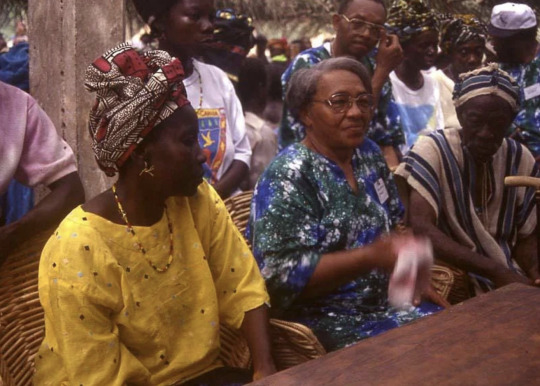
85K notes
·
View notes
Text
A photo of the altar from tonight's Deipnon ceremony in Eiresione Iketiria. I'm so glad we're doing community ceremony now 🥲
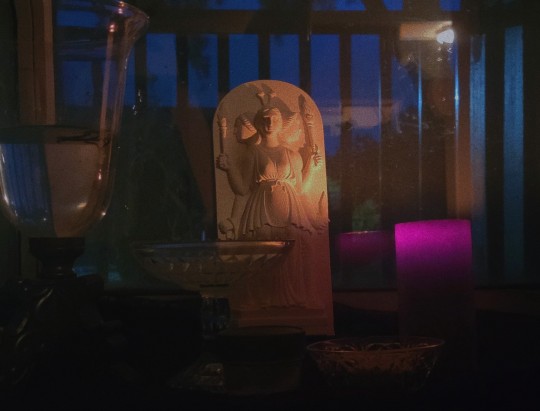
Annnnd shameless link plug if anyone wants to join:
38 notes
·
View notes
Text
I live for the tags you all come up with on the reblogs. Absolute gold. That is all.

9 notes
·
View notes